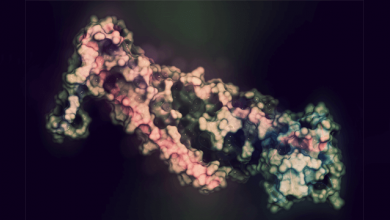Search results
Author(s):
Alessandro Pingitore
,
Giorgio Iervasi
,
Francesca Forini
Added:
3 years ago
Cardioprotection includes all methods and mechanisms that lead to the reduction in infarct size, and is thus involved in the evolution of post-ischaemic heart failure (HF). This is a growing research issue since ischaemic heart disease is the leading cause of morbidity and mortality worldwide. A key challenge for these studies is the unravelling of cardioprotection complexities such as the…
View more
Author(s):
Marcos Garcia-Guimarães
,
Teresa Bastante
,
Paula Antuña
,
et al
Added:
3 years ago
Spontaneous coronary artery dissection (SCAD) can be defined as the acute development of a false lumen within the coronary artery wall that may lead to flow limitation by compression of the true coronary lumen. This definition of SCAD excludes coronary dissections that are secondary to atherosclerotic disease, produced by the extension of an aortic dissection, iatrogenic or related to a trauma.1…
View more
Author(s):
Hans-Joachim Trappe
Added:
3 years ago
Neither supraventricular nor ventricular tachyarrhythmias are uncommon during pregnancy.1,2 When they are diagnosed, patients, relatives and physicians are frequently worried about ectopic beats and sustained arrhythmias.3,4 One should question whether arrhythmias should be treated in the same way as they would be outside pregnancy because all commonly used antiarrhythmic drugs cross the placenta…
View more
Author(s):
Markus Flesch
Added:
3 years ago
Introduction
Chronic heart failure (HF) is a common, malignant disease and is a major economic burden for healthcare systems in developed nations. It affects 5% to 10% of all people. In Germany, approximately 150,000 people are newly diagnosed with HF per year. Fifteen per cent of approximately 1.6 million HF patients in Germany are in advanced HF status, being classified as stage III-IV…
View more
Author(s):
Miriam Shteinshnaider
,
Dorit Almoznino-Sarafian
,
Sylvia Berman
,
et al
Added:
3 years ago
Abstract
Little is known about gender-related differences in clinical variables affecting the survival in inpatients with atrial fibrillation (AF). We recorded and compared clinical data and long-term mortality between 126 males and 124 females hospitalised with paroxysmal/persistent AF. Women were older and more symptomatic than men. Hypertension and renal dysfunction were more common in…
View more
CMR and Myocarditis
Author(s):
Rocio Hinojar
,
Eike Nagel
,
Valentina O Puntmann
Added:
3 years ago
Article
Author(s):
Andrea Barison
,
Luigi Emilio Pastormerlo
,
Alberto Giannoni
Added:
3 years ago
Among the various cardiovascular diseases, non-ischaemic dilated cardiomyopathy (DCM) represents a major cause of morbidity and mortality.1 DCM is characterised by the presence of left ventricular dilatation and systolic dysfunction in the absence of coronary artery disease or abnormal loading conditions (hypertension, valvular disease).2 It originates from several aetiologies and includes…
View more
Author(s):
Cameron T Lambert
,
Pratik Sandesara
,
Ijeoma Isiadinso
,
et al
Added:
3 years ago
Familial hypercholesterolaemia (FH) is an autosomal-dominant disorder associated with mutations in the LDL receptor (LDLR) gene resulting in markedly elevated plasma low-density lipoprotein cholesterol (LDL-C) levels and premature atherosclerotic cardiovascular disease (ASCVD). Heterozygous FH (HeFH) (mutation in one allele) is associated with plasma LDL-C levels >190 mg/dl, whereas homozygous…
View more
Testosterone and the Heart
Author(s):
Michael G Kirby
,
Geoffrey Hackett
,
Sudarshan Ramachandran
Added:
3 years ago
Article













